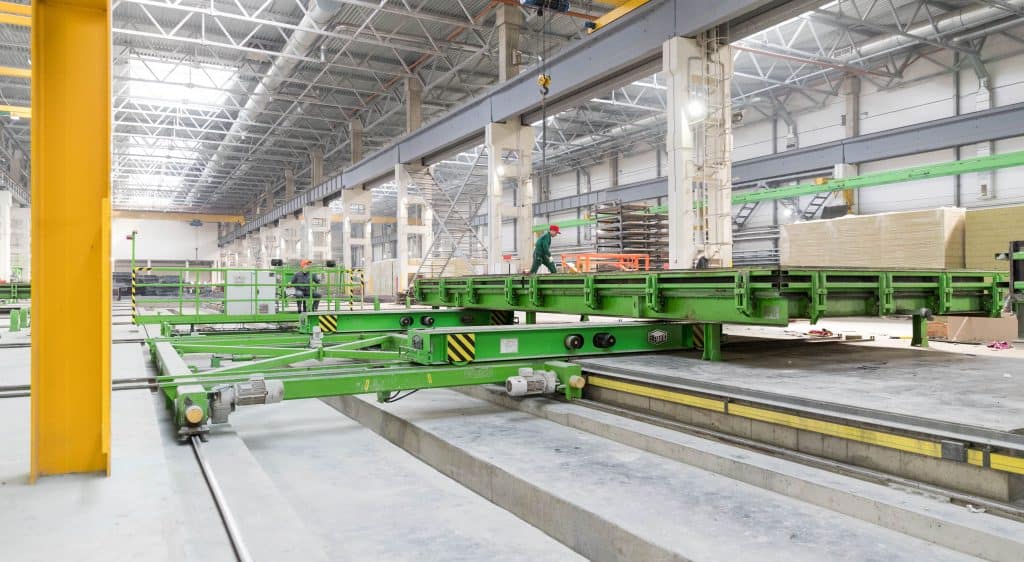Are precast mold setup times slowing down your entire production line?

Typically, molds in a precast production line run consecutively, based on the first in, first out (FIFO) principle. This is ok as long as the setup times for individual molds are much the same so that the production line runs at a constant optimal speed. However, in real life, production needs vary and different molds with different setup times enter the same production line.
This causes the entire production line to run at the speed of the slowest mold, which decreases the output and productivity of the precast wall factory. For instance, molds that require more setup usually have more openings, junction boxes, and empty conduits for feed lines as well as installation housings for luminaires. Setting these up for the mold takes more time compared to less complex wall elements.
To some extent, this problem can be addressed via production planning: put in first the molds with quick setup times and then the slower ones. This, however, makes production planning demanding and the factory becomes inflexible as elements are not produced in the order needed.
The solution is simple: let the faster molds bypass the slower ones
You can see the solution when driving on a highway. Faster vehicles bypass the slower ones. As there is only one lane in a precast element production line, the slower molds need to be moved aside so that the faster molds can bypass them. This can be achieved with a transfer wagon, which is used to move a mold with a slow setup time to the side of the production line. And when it is being set up, the other molds continue to run along the production line.

Having a production line equipped with transfer wagons enables the line to run fluently with no unneeded stops. As an example, think of a 50-mold production line where one mold needs 40 minutes to set up compared to the others needing a setup of just 15 minutes. During the setup of the 40-minute mold, a production line with a transfer wagon will continue to run and produce other elements in 15 minute intervals whereas a line with no transfer wagon would stop for 40 minutes. The transfer wagon is used to move the slow mold to one side, which improves the output and flexibility of the line, making the production more profitable.
It easy to cope with production where molds are running on different cycle times, when transfer wagons are placed along the line. Today, varying setup and cycle times are increasing as precast walls are being fabricated into much further stages of readiness and surface finishing, which lead to more work during mold setups. In addition to improved output, this solution makes it a lot easier to meet the delivery demands for precast products as set by construction sites.
ORDER OUR NEWSLETTER OR CONTACT US!
or